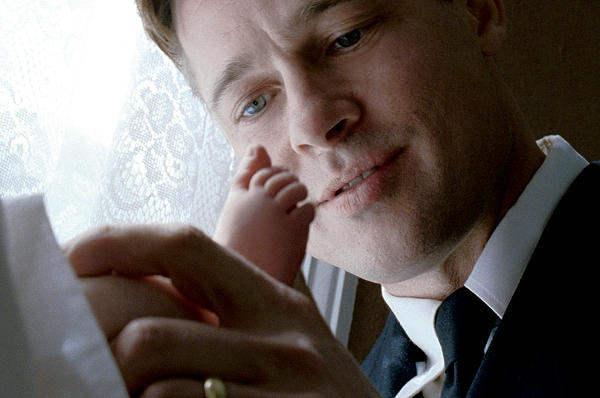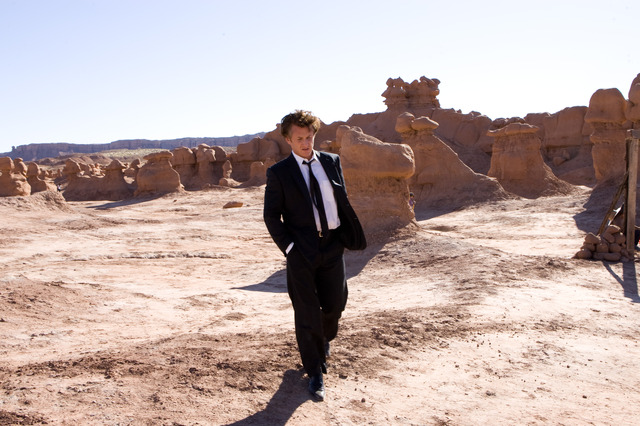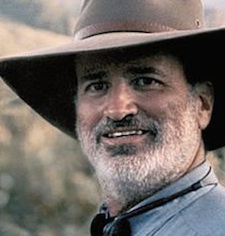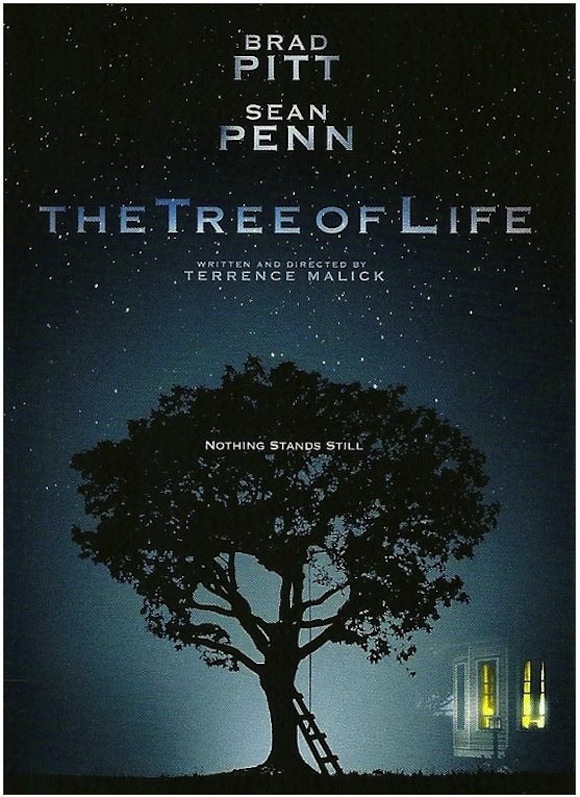
Forty-three years have passed since “2001: A Space Odyssey” until a filmmaker has finally dared to create a life allegory this monumental, with images this boldly imaginative, this headlong into metaphysical realms. Terrence Malick’s The Tree of Life gets you to think about the reasons why you act the way you do, why you regard your spiritual beliefs in the ways you do, why you’ve been chosen to be the way you are. At least that’s what I bring to it. Malick, an Episcopalian, has pulled out Biblical references that are very pro-Christian, notable at least in the eyes of people who think in terms of religious categorizing. I believe however that Malick wants us to embrace our religious backgrounds but think beyond conventional ideology, too. True, these ideas will not translate to all audiences, especially ones who only go for strong narrative films. It’s simultaneously impressionistic and flowing like a tone poem, and not collectively an isolated specific story that amasses a single message – it amasses reasons as to our existence and to how to find happiness within it. I have seen more entertaining films in my life, but few that have inspired me to change the way to live my life.

We meet characters that Malick identifies with from the baby boomer era. There has been a tragic loss in the family. The O’Brien family copes. Decades later in the contemporary world one of the now grown O’Brien sons (Sean Penn) is adrift in modern architecture and the traps of impersonal big business. Then Malick hurls back a million years in time to show us the Big Bang, how the universe rapidly expanded by elements (there are no promotional images of this offered by the distributor). We see atoms clustering and expanding into these elements. We see the parts of the nucleosynthesis that lead to Earth formation. This is not a quick, condensed montage threatened to be shortened by test audience polls. Malick turns it into a visual and aural symphony, and the more he puts on screen the more you want him to continue with it. He puts dinosaurs on the screen, but they aren’t there as an symbolic exhibit of predatory food pyramids but instead are there for Malick’s insight into behavioral science.

We throttle forward. At the head of a Texas family of the 1950’s is Brad Pitt as Mr. O’Brien. He’s a great man of brilliant ideas, but unrecognized. Like many of us, he is unrewarded for his gifts. He is a man who yearns to leave an imprint on the world, but is left with the consolation family. If only he can see that as life’s ultimate reward. He has a firm hand with his boys as if his role as a stern father is what will give him pride. He scorns his boy for playing past the property line onto his neighbor’s yard, for slamming the screen door, for talking out of turn, for calling him “dad” and not “father.” Malick has challenged us to consider the miracle of the Big Bang, the vastness of the universe, the expansion of the planet that would become a habitable Earth. And now people have come to worry about property lines?
Love is bliss in the beginning. But perceptions of life get modified, societal pressures corrupt inner goodness. Mrs. O’Brien (Jessica Chastain) might, as many of us wonder, come to love her children more than her husband. The children, especially Jack (Hunter McCracken, the rebel/troublemaker), dodge father and run to mother as a refuge. But Mr. O’Brien brings fatherly knowledge to his sons by teaching them how to tend the yard, how to throw a punch, how to adhere to table manners, how to respect the Church. Mr. O’Brien loses a copyright case in court, he returns to customary father and husband duties. Within days he loses his temper. He takes it out on the children. In glimpses, the children watch him to take it out on their mother.
We fear that Mr. O’Brien has a black heart, and that his parenting style will only worsen the morale of his children. Pitt is terrific as an intelligent, stern, formidable, and sometimes loving father capable – if rarely – of using honest words to his boys that explain his actions. Chastain is an actress that by sight of her fragile looks might be over-emotional, but instead, is reticent in the face of bubbling turmoil. McCracken plays a child of mischief, making the outdoors his unlimited playground, and is the most active character on-screen. Malick shoots most of his “scenes” as 15 second impromptu moments. Maybe a 45 second scene happens here or there. Effortlessly, he accumulates an entire sense of watching the boys grow up through adolescence. Examining the family fabric dissolving. Then assembling back together again.
What is the meaning of the not-real ending? When it comes down to the final summation of our lives, we are connected to just a few dozen people that really mean something to us. We might wish that we could all collect together harmoniously. Not encumbered by laws, regulations, social demands, duties. Malick shoots it as a fanciful dream that is cut away from the burdens of actual living environments. It is an ending set upon a wet paradise that is entirely wishful. Better than the margins we have limited ourselves to. We live in cubes even though we have an entire Earth to cohere if we thought big enough.
 Malick is the director of other cinematic achievements starting with “Badlands” (1973), “Days of Heaven” (1978), and “The Thin Red Line” (1998). I would prefer rather to forget about “The New World” (2005). Now we’ are at “The Tree of Life” and it is simply a visionary triumph. Wrapped in the abstract. In regards to the first statement in my review, it’s true that Darren Aronofsky attempted massive leaps into spiritual rapture with “The Fountain” (2006). Although beautiful, too many extraneous elements marred the work. But the gifted Aronofsky might be the only other living filmmaker besides Malick willing to develop material that transcends ordinary world conventions. But “The Tree of Life” might well be the most inspirational work of art to the new generation of filmmakers. With his meticulous craftsmanship and time dedicated to each project, Malick is elevating to Kubrick ranks.
Malick is the director of other cinematic achievements starting with “Badlands” (1973), “Days of Heaven” (1978), and “The Thin Red Line” (1998). I would prefer rather to forget about “The New World” (2005). Now we’ are at “The Tree of Life” and it is simply a visionary triumph. Wrapped in the abstract. In regards to the first statement in my review, it’s true that Darren Aronofsky attempted massive leaps into spiritual rapture with “The Fountain” (2006). Although beautiful, too many extraneous elements marred the work. But the gifted Aronofsky might be the only other living filmmaker besides Malick willing to develop material that transcends ordinary world conventions. But “The Tree of Life” might well be the most inspirational work of art to the new generation of filmmakers. With his meticulous craftsmanship and time dedicated to each project, Malick is elevating to Kubrick ranks.
138 Minutes. Rated PG-13.
DRAMA / MIND-BENDER / MASTERPIECE VIEWING ANYTIME OF YEAR
Film Cousins: “2001: A Space Odyssey” (1968); “The Man Who Fell to Earth” (1976); “Baraka” (1994); “The Fountain” (2006).





